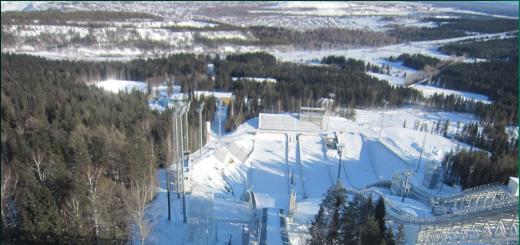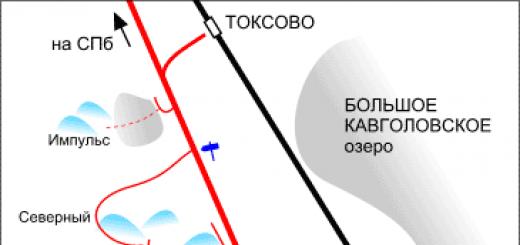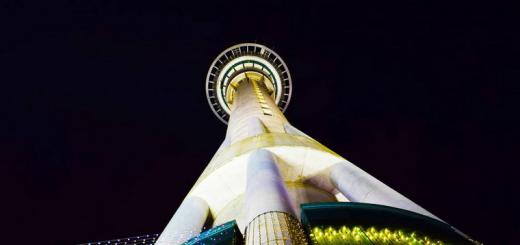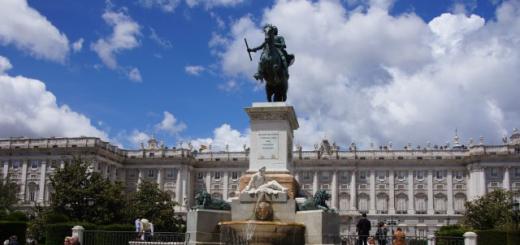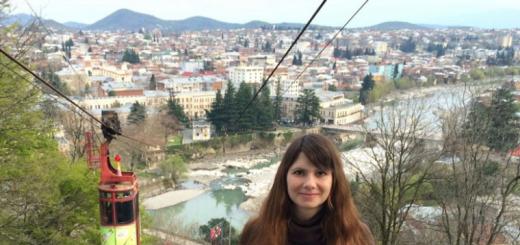The Taj Mahal Mausoleum is one of the most recognizable landmarks not only in India but throughout the world. The structure was built by Emperor Shah Jahan in memory of his beloved third wife, Mumtaz Mahal, who died in childbirth. The Taj Mahal is considered not only the most beautiful building in the world, but also a symbol of eternal love. It has no analogues in the whole world. The mausoleum was built around 1630-1652. More than 20,000 builders were called in to build the Taj Mahal. There were craftsmen not only from all over India, but also craftsmen from Central Asia, the Middle East and Persia were invited. It is believed that Shah Jahan himself participated in the construction of the tomb. Shah was a very educated person, a good artist, well versed in art.

(Taj Mahal, Agra, India)
To create the crown of the creation of oriental architects, materials from all over Asia were used. More than a thousand elephants were involved in their transportation. More than twenty-eight types of precious and semi-precious stones were used in the work on inlaying gems into white marble. Elements of Persian, Indian and Islamic harmoniously fit into the Taj Mahal architectural styles... Taj Mahal (translated as ‘Palace with a dome’) is considered to be the most beautifully preserved and architecturally unique mausoleum in the world, a marble statue of eternal love.

(Taj Mahal, inside view)
I would like to note that the tomb of Mumtaz is somewhat reminiscent of a mosque. Indeed, in the Middle Ages, strict canons were adhered to in the architecture of the East, and this is indicated by openwork lancet-gently sloping arches, domes and minarets, intricate Arabic ligature, and on the facades of buildings a bizarre floral and floral ornament. All these elements not only perfectly complemented each other, but also miraculously fit into the strict symmetry of the mausoleum. The main material for construction is white marble, it was delivered on special carts from a deposit located 320 km from Agra.
Taj Mahal - divinely majestic and shining like a splendid pearl, having height main tower mausoleum 74 meters, it seems so light and airy, like a dandelion growing in the valley of the Yamuna River. The entire complex covers 42 acres. Each building, each element has its place in this complex and fits perfectly into the main structure. According to the Qur'an, "4" is a holy number and therefore everything here is a multiple of four. The platform on which the complex stands is quite high and has the shape of a square (56x56 m), the corners of which are "cut off". The main dome of the mausoleum goes up 64 meters, as if propping up the sky. It is surrounded by four smaller domes. On four sides of the mausoleum, 42-meter high, like spiers, minarets rise, completing the composition. The white marble walls of the Taj Mahal shine in the golden glow of the sun.

(Taj Mahal, top view)
The shining Taj Mahal is love sung and woven into the inlaid ornament of divine architecture. A monument of unprecedented beauty, a dream sung in a poem, mixed with pure love and embodied in marble. His name is "The Pearl of India - Taj Mahal". One gets the impression that the great architect of the past centuries created a luxurious and openwork cape of beautiful stone lace from a single piece of huge white marble and, placing it on a stone pedestal, crowned it with a large dome. Throwing at it, in the end, a handful of gems. What could be more beautiful and sadder than such a tomb for the most devoted Mumtaz.

(Taj Mahal, inside view)
Over time, it became the last refuge for Shah Jahan. It contains the remains of the Shah and his eternal love, his wife. A staircase leads to the very heart of the tomb, and each pilgrim, barefoot, enters this temple of eternal love. There is always silence and tranquility, you forget about everything, enjoying the snow-white marble walls inlaid with mosaics of jasper, jade and black marble. On the walls, drooping flowers intertwined in an intricate dance, encircling the floor and walls with an eternal carpet. Even in modern times every corner of the mausoleum is pompous with wealth, although there were some marauders here too. Silver doors, a parapet of gold, and fabric studded with pearls were all plundered.
If the Taj Mahal is a gem, then it should have a worthy setting as a park. Initially, it was a garden, but during the colonization by the British, craftsmen from Europe gave it the appearance of a majestic park. The park was created as a harmonious ensemble framing the Taj. In its center is a luxurious and snow-white marble pool, it seems to divide the entire territory of the park into four exact halves, and they, in turn, are divided into an equal number of sections. A long irrigation canal rests against the facade of Taj, dividing the entire ensemble into two equal halves. Four tiled paths have been laid to the four minarets of Taj. If you look at the complex from a bird's eye view, it might seem that the park repeats the bizarre shapes of the mausoleum. And at the same time, the general symmetry of both the shrine and the park is not broken.

(Taj Mahal, top view)
Even now, after many centuries, the "Pearl of India - Taj Mahal" that has come down to us plays for us with the most delicate mother-of-pearl tints in the morning and evening dawn, remaining majestic and unique. And by day, creamy white marble walls radiate a golden hue, capturing the rays of the midday sun. But at night the mausoleum is like a shaded purple haze - a fairy tale that descended from 1001 nights. When morning comes "Taj" is reflected in the quiet water ripples of the Yamuna River and it seems that he is majestically striving up to the heavens.
On July 7, 2007, in Lisbon (Portugal), the new seven wonders of the world were named and the Taj Mahal mausoleum-mosque was added to this list. It is located in Agra (India) near the Jamna River. The easiest way to get to the Taj Mahal is to fly to Delhi and from there take a bus, taxi or train to your destination. The journey by train takes up to 3 hours, by taxi 3-5 hours. It is considered a crime if you visit India and do not see the Taj Mahal.

It is simply impossible to describe the splendor and beauty of this mosque in words. This is a truly fabulous and beautiful architectural structure that combines elements of Islamic, Persian and Indian architectural styles.

The rise of the Taj Mahal is the story of the tender love of Shah Jahan, king of the Great Mughals, for his wife Mumtaz Mahal. As a prince, Shah Jahan took a 19-year-old girl as his wife, and his love for her was boundless. Despite owning a large harem, he gave all his tenderness and attention to only Mumtaz. She bore him 14 children, six girls and eight boys. But during the last birth, Jahan's wife died. Shah Jahan's grief was so great that he lost the meaning of life, turned gray, declared 2 years of mourning and even wanted to commit suicide.

Above the grave of his wife, by order of Shah Jahan, was built beautiful palace Taj Mahal in which he, a few years later, was himself buried near the grave of his wife. Taj Mahal is not just a wonder of the world, it is a symbol of the eternal love of two people. Shah Jahan promised before the death of his wife to create a monument that would convey all the beauty of Mumtaz.

Construction and architecture of the Taj Mahal
History does not provide an answer to the question of who built this mosque. The fact is that in the Islamic world of that period, all the ideas of the construction were attributed not to the architect, but to the customer. A group of architects worked on the mosque, but the main idea belongs to Ustad Ahmad Lahauri. The construction of the palace began in December 1631. The construction of the central mausoleum was completed in 1648, and 5 years later the construction of the entire complex was completed. For 22 years, about 20 thousand people took part in the construction of the Taj Mahal. More than a thousand elephants were used to transport materials that were brought in from India and Asia. The blocks of marble were dragged by the bulls along a specially built 15-kilometer ramp from the compacted earth. Sculptors from Bukhara, stone cutters from Baluchistan, inlay masters from southern India, calligraphers from Persia and Syria, as well as specialists and craftsmen in cutting marble ornaments and erecting towers worked at the construction site.
The Taj Mahal is considered "the pearl of Muslim art in India." The most famous component of the palace is its white marble dome, which, due to appearance also called the onion dome. Its height is 35 meters. Its crown is in the Islamic style (the horns of the month are pointing up) and was originally made of gold, but in the 19th century it was replaced by a bronze copy.

The height of the mosque itself is 74 meters and is represented by a five-domed structure with four minarets at the corners. The minarets are slightly tilted in the opposite direction from the tomb, so as not to damage it during the destruction. The building is adjoined by a garden with a swimming pool and fountains. Inside the mausoleum there are two tombs, which are located strictly above the burial place of the shah and his wife. The walls of the palace are lined with marble inlaid with gems (carnelian, agate, malachite, turquoise, etc.). And in the rays of light, the walls are simply mesmerizing. In sunny weather, marble looks white, on a moonlit night it turns silvery, and at dawn it turns pink.
The exterior of the Taj Mahal is considered one of the best examples of architecture. Various plasters, paints, carvings and stone inlays were used to create the decorative elements of the mosque. Also, excerpts from the Koran were used for the decorative and artistic design of the complex. On the gates of the Taj Mahal it is written: “O you, resting soul! Return to your Lord content and contentment! Enter with My slaves. Enter My Paradise! "
A huge number of semi-precious and precious stones were used in the interior of the palace. The inner hall of the Taj Mahal is a perfect octagon. The height of the walls is 25 meters, and the ceiling is decorated in the form of the sun and is represented by an internal dome.
The only asymmetric element of the complex is the cenotaph of Shah Jahan, which is located near the grave of his wife. It was completed later and is larger than the cenotaph of Mumtaz, but decorated with the same decorative elements. On the gravestone of Mumtaz, calligraphic inscriptions are made that praise her, and on the grave of Jahan it is written: "He set off on a journey from this world to the abode of Eternity on the night of the twenty-sixth day, the month of Rajab in 1076".
TO architectural complex adjoined by a magnificent garden, which stretches in length for 300 meters. In the center of the park there is a water channel, which is faced with marble, and there is a pond in the middle of it. It reflects the image of the tomb. Initially, the garden impressed with its abundance of vegetation, but over time, the gardening has changed.

Myths and legends
There is a legend that Shah Jahan wanted to build an exact copy of the palace from black marble on the opposite bank of the river, but did not have time. There is also a myth that the emperor brutally killed architects and craftsmen who took part in the construction of the palace, and all builders signed an agreement in which they pledged not to take part in the construction of such a structure. But to date, such information has not been confirmed by anything and remains just a fiction and legend.

Tourism
Every year, the Taj Mahal is visited by millions of tourists from different countries... Tourists are interested in the fact about its optical focus. If you move your back forward to the exit, respectively, facing the palace, you get the feeling that the mausoleum is just huge against the background of trees and the environment. And by the way, airplanes are prohibited from flying over the Taj Mahal. The mosque is open to the public from 6 am to 7 pm on weekdays, except Friday, when prayers are held there. Also, the Taj Mahal is open for night viewing on the day of the full moon, including two days before and after the full moon, except for Friday and the month of Ramadan.
One of the most wonderful creations of human hands, a place that annually attracts millions of people from all over the world - the majestic and beautiful Taj Mahal - is rightfully a real symbol of India.
Construction history
Taj Mahal is an amazing white building that was built as a tomb for the third and beloved wife of the great Mughal Emperor Shah Jahan Mumtaz Mahal, on the banks of the Jamna River in Agra. Despite the large harem, the emperor loved Mumtaz Mahal most of all. She bore him thirteen children, and died in 1631, at the birth of the fourteenth. The ruler greatly grieved after the death of his beloved wife, so he ordered to gather the most skilled craftsmen of that time to create a mausoleum that would become a symbol of his endless love for Mumtaz. Construction began in 1632 and lasted over 20 years: the main complex was completed by 1648, while the secondary buildings and garden were completed five years later. Guri-Amir, the mausoleum of Tamerlane, the founder of the dynasty of Mughal rulers, located in Samarkand, the Jama Masjid mosque in Delhi, as well as the tomb of Humayun, one of the Mughal rulers, became a kind of "prototypes" of this grand tomb.
Architectural miracle
Taj Mahal is made in traditional Persian style and is a complex of luxurious and stately structures built of white marble. The main place in it is occupied by the mausoleum itself, located in the center of the site. It has the shape of a cube with "cut" corners and is crowned with a huge dome. The structure stands on a square "pedestal" with high minarets at its four corners. The mausoleum inside has a large number of rooms and halls, decorated with amazing mosaics, painted with delicate patterns and ornate ornaments. The coffin of Mumtaz Mahal is located in one of these rooms. And next to him is the coffin of Shah Jahan himself, who wished after death to be buried next to his beloved. Initially, the ruler was going to build an exact copy of the tomb on the other side of the Jamnah for himself, only from black marble, but he failed to bring his idea to life, so he bequeathed to bury himself in the Taj Mahal next to his wife. But it is worth noting that both of these coffins are empty, and the real burial place is in an underground crypt.
Initially, the mausoleum was decorated with a huge number of precious and semi-precious stones, pearls, and its main door was made of pure silver. But, unfortunately, to our time all these treasures have practically not survived, "settled" in the pockets of not very honest "tourists".
On three sides, the Taj Mahal is surrounded by a beautiful park, the gate to which also represents architectural masterpiece... Through the park, roads leading along a wide canal lead to the main entrance. There are two mosques on both sides of the mausoleum.
Translated from Persian, “Taj Mahal” means “the crown of all palaces”. And it is truly "the pearl of Muslim art in India and one of the world's recognized masterpieces of world heritage."
The Taj Mahal was listed as a UNESCO World Heritage Site in 1983.
It is also worth noting that officially tourists are allowed to take pictures of the Taj Mahal only from one side - opposite the main entrance.
On a note
- Location: the city of Agra, 200 km from Delhi.
- How to get there: by train or express to the railway station "Agra Cantt."
- Official website: www.tajmahal.gov.in
- Opening hours: daily from 6.00 to 19.00, except Friday. Two days before and two days after the full moon, the mausoleum is open in the evening hours - from 20.30 to midnight.
- Tickets: foreigners - 750 rupees, local residents- 20 rupees, children under 15 - free. Tickets for visiting at night are purchased per day.
Address: India, Agra
Start of construction: 1632 year
Completion of construction: 1653 year
Architect: Ustad Ahmad Lahauri
Height: 72 m
Coordinates: 27 ° 10 "30.5" N 78 ° 02 "31.4" E
As soon as the famous mausoleum of the Taj Mahal was not called! The famous Indian poet Rabindranath Tagore wrote about the Taj Mahal that this monument is “a tear sparkling on the face of eternity”.
Taj Mahal aerial view
In 1983 the mausoleum was included in the list World heritage UNESCO and recognized as the best example of Indo-Muslim architecture.
Taj Mahal - the legend of love, frozen in marble
In the history of the white marble masterpiece, facts and legends are closely intertwined, but most historians agree that the tomb was built in the 1630s. about the order of the emperor of the Great Mughals - Shah Jahan in memory of the untimely deceased wife of Mumtaz Mahal. The lovers got married when the beautiful Mumtaz-Mahal was 19 years old. Shah Jahan loved only her and did not notice other women. The emperor's wife became his closest adviser, took part in the conduct of state affairs and accompanied her husband on all military campaigns. The spouses had 13 children, and with the birth of the 14th child, Mumtaz Mahal died. The emperor sat for a long time at his wife's deathbed, tirelessly mourning her. Heartbroken Shah Jahan turned gray, declared a two-year mourning in the country and decided to build a mausoleum in Agra, the capital of the Mughal Empire, on the banks of the Jamna River, which has no equal on Earth, has never been and never will. Construction continued for 22 long years. More than 20,000 people participated in it, among them builders from all over the empire, craftsmen from Venice, Persia, Central Asia and the Arab East. According to legend, the ruler was so impressed by the grandeur and perfection of the tomb that he ordered the chief architect, Ustad-Isa, to be cut off, so that he could not repeat his masterpiece.

View of the Taj Mahal from the garden
Some scholars believe that the mausoleum was designed by Shah Jahan himself, who is passionate about architecture. He gave his creation a name consonant with the name of his deceased wife - Taj Mahal ("Crown of the Palace")... On the other side, the ruler was going to build the same mausoleum for himself, but of black marble, and the two buildings were to be connected by an openwork bridge of gray marble, thrown across the river. But the plans of the emperor did not come true. Soon a fierce struggle for power unfolded, during which Aurangzeb, the son of Shah Jahan, overthrew his father from the throne and imprisoned him in the Red Fort for 9 years, after which the prisoner died and was buried next to his wife in the Taj Mahal.
Taj Mahal architecture
Today the white marble monument of great love, "the pearl of Indian architecture" is one of the most important sights of India. In 2007, the Taj Mahal was included in the list of the New Seven Wonders of the World, compiled after a poll of more than 100 million votes. The majestic five-domed mausoleum with 4 minarets in the corners rises to a 74-meter height on a white marble platform and, reflected in the motionless smooth surfaces of an artificial reservoir, seems to hover above the ground like a fabulous mirage.

Taj Mahal from the opposite bank of the Jamna River
Its walls, lined with polished marble, shine with whiteness on a bright sunny day, emit a lilac-pink glow at sunset, and silvery on a moonlit night. This marble was transported for construction for 300 km from Rajasthan. Precious stones and semi-precious stones are used in the inlay of the walls; black marble is decorated with quotes from the Koran. Malachite was brought from Russia, carnelian - from Baghdad, turquoise - from Tibet, sapphires and rubies - from Siam, lapis lazuli - from Ceylon, chrysolite - from the banks of the Nile. Symmetry is impeccably observed in the architecture of the ensemble. It is disturbed only by the tomb of Shah Jahan, which was built after his death, much later than the tombstone of Mumtuz Mazal, which was located strictly in the middle of the mausoleum.
Symbols hidden in the layout of the mausoleum
The Taj Mahal has many symbols. So, for example, in a park framing architectural ensemble, cypresses grow - the personification of sadness in Islam, and on the entrance gate are carved verses (revelations) from the Koran, addressed to believers and ending with the words "Enter My Paradise!". Thus, one can understand the plan of Shah Jahan - he built a paradise where his beloved will live. Modern researchers claim that, mad with grief, the emperor decided to approach divine knowledge by creating heaven on Earth. Sometimes Shah Jahan said that he was building the throne for Allah himself.

Fragment of the facade of the Taj Mahal
Taj Mahal endangered
Currently, the creation of medieval architects is in decline. Cracks appeared on the walls of the Taj Mahal, it loses its shining whiteness due to polluted air, and the minarets deviated from the vertical axis by 3 mm and may collapse in the future. The Jamna River is shallowing, and this can lead to a change in the soil structure and subsidence of the foundation. And yet, despite all the threats of destruction, the magnificent Taj Mahal has existed for over 350 years, attracting millions of visitors from all over the world with its romantic legend and architectural excellence.
The Taj Mahal is a recognized symbol of eternal love, because it was created for the sake of the woman who conquered the heart of the Mughal Emperor Shah Jahan. Mumtaz Mahal was his third wife and died giving birth to their fourteenth child. To perpetuate the name of his beloved in memory, the padishah conceived a grandiose project to build a mausoleum. The construction took 22 years, but today it is an example of harmony in art, which is why tourists from all over the world dream of visiting the wonder of the world.
Taj Mahal and its construction
To build the world's greatest mausoleum, the padishah employed more than 22,000 people from all over the empire and surrounding states. The best masters worked on the mosque to bring it to perfection, observing complete symmetry according to the emperor's plans. Initially, the plot of land on which it was planned to erect the tomb belonged to Maharaja Jai Singh. Shah Jahan gave him a palace in the city of Agra in exchange for an empty territory. 
First, work was carried out to prepare the soil. The territory exceeding a hectare in area was dug up, soil was replaced on it for the stability of the future building. The foundations were dug wells, which were filled with rubble stone. During the construction, white marble was used, which had to be transported not only from different parts of the country, but even from neighboring states. To solve the problem with transportation, it was necessary to specially invent carts, to design a lifting ramp.
Only the tomb and the platform to it were built for about 12 years, the rest of the complex's elements were erected over another 10 years. Over the years, the following structures have appeared:
- minarets;
- mosque;
- javab;
- Large gate.

It is because of such a length of time that disputes often arise as to how many years the Taj Mahal was built and which year is considered the moment of completion of the construction of the landmark. Construction began in 1632, and all work was completed by 1653, the mausoleum itself was ready already in 1643. But no matter how long the work lasted, as a result, an amazing temple with a height of 74 meters appeared in India, and is surrounded by gardens with an impressive pool and fountains ...
Feature of the Taj Mahal architecture
Despite the fact that the building is so significant from a cultural point of view, there is still no reliable information about who actually was the main architect of the tomb. In the course of the work, the best craftsmen were involved, the Council of Architects was created, and all decisions made came exclusively from the emperor. In many sources, it is believed that the project for the creation of the complex came from Ustad Ahmad Lahauri. True, when discussing the question of who built the pearl of architectural art, the name of the Turk Isa Mohammed Efendi often pops up. 
However, it does not really matter who built the palace, since it is a symbol of the padishah's love, who sought to create a unique tomb worthy of his faithful companion in life. For this reason, white marble was chosen as the material, denoting the purity of the soul of the Mumtaz Mahal. The walls of the tomb are decorated with precious stones, laid out in intricate pictures to convey the amazing beauty of the emperor's wife.
Several styles are intertwined in architecture, among which there are notes from Persia, Islam and Central Asia. The main advantages of the complex are considered to be a checkerboard floor, minarets 40 meters high, as well as an amazing dome. A special feature of the Taj Mahal is the use of optical illusions. So, for example, inscriptions from the Koran written along the arches appear to be the same size throughout the entire height. In fact, the letters and the distance between them at the top are much greater than at the bottom, but a person walking inside does not see this difference. 
The illusions do not end there, since you need to watch the attraction at different times of the day. The marble from which it is made is translucent, therefore it seems white during the day, at sunset it acquires a pinkish tint, and at night under the moonlight it gives off silver.
In Islamic architecture, it is impossible to do without images of flowers, but how skillfully the monument was made from mosaics cannot fail to impress. If you look closely, you can see dozens of gems encrusted just a couple of centimeters away. Such details are found inside and outside, because the whole mausoleum is thought out to the smallest detail. 
The whole structure is axially symmetrical on the outside, so some details were added only to maintain the overall appearance. The interior is also symmetrical, but already relative to the Mumtaz Mahal tomb. The general harmony is disturbed only by the tombstone of Shah Jahan himself, which was installed next to his beloved after his death. Although for tourists it doesn't matter what the symmetry looks like inside the premises, because it is decorated so exquisitely that the eyes diverge, and this is given the fact that most of the treasures have been plundered by vandals.
For the construction of the Taj Mahal, it was necessary to install massive forests, while it was decided to use for this not the usual bamboo, but solid brick. The craftsmen who worked on the project argued that it would take years to disassemble the created structure. Shah Jahan went the other way and announced that everyone can take as many bricks as they can carry. As a result, the structure was dismantled by the residents of the city in a few days. 
The story goes that upon completion of the construction, the emperor ordered to gouge out the eyes and cut off the hands of all the craftsmen who performed a miracle so that they could not reproduce similar elements in other works. And although in those days many really used such methods, it is believed that this is only a legend, and the padishah limited himself to a written assurance that the architects would not create a similar mausoleum. 
On this Interesting Facts do not end, because opposite the Taj Mahal there was supposed to be the same tomb for the Indian ruler, but made of black marble. This was briefly stated in the documents of the son of the great padishah, but historians are inclined to believe that they were talking about the reflection of the existing tomb, which looks black from the pool, which also confirms the emperor's passion for illusions.
There is controversy that the museum could collapse due to the fact that the Jamna River has become shallow over the years. Recently, cracks were found on the walls, but this does not mean that the reason lies only in the river. The temple is located in a city where it is influenced by various environmental factors. The once snow-white marble takes on a yellow tint, so it often has to be cleaned with white clay. 
For those who are interested in how the name of the complex is translated, it should be said that from Persian it means “the greatest palace”. However, there is an opinion that the secret lies in the name of the chosen one of the Indian prince. The future emperor was in love with his cousin even before marriage and called her Mumtaz Mahal, that is, the Decoration of the Palace, and Taj, in turn, means “crown”.
Note for tourists
It is not worth mentioning what the great mausoleum is famous for, because it is included in the UNESCO World Heritage List, and is also considered the New Wonder of the World. During the excursion, they will surely tell a romantic story about who the temple was built in honor of, as well as give short description stages of construction and reveal the secrets in which city there is a similar structure. 
To visit the Taj Mahal, you need an address: in the city of Agra, you need to get to State Highway 62, Tajganj, Uttar Pradesh. Photos on the territory of the temple are allowed to be taken, but only with ordinary equipment, professional equipment is strictly prohibited here. True, many tourists do nice pictures outside the complex, you just need to know where viewpoint, from which the top view opens. The city map usually indicates from where you can see the palace and from which side the entrance to the complex is open.

